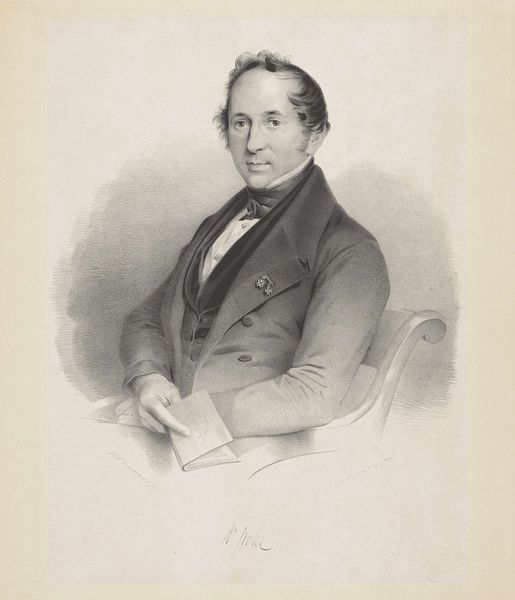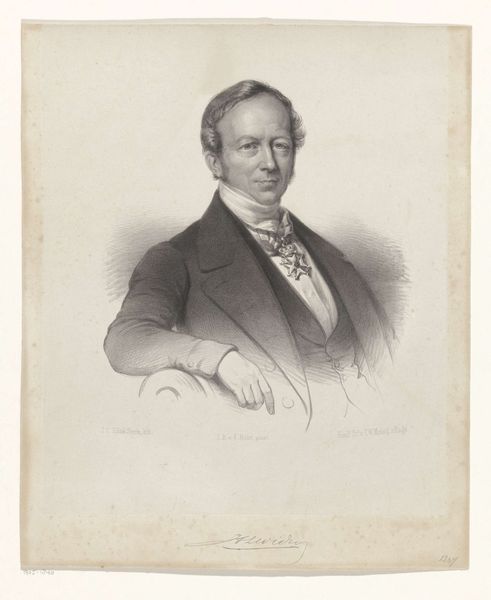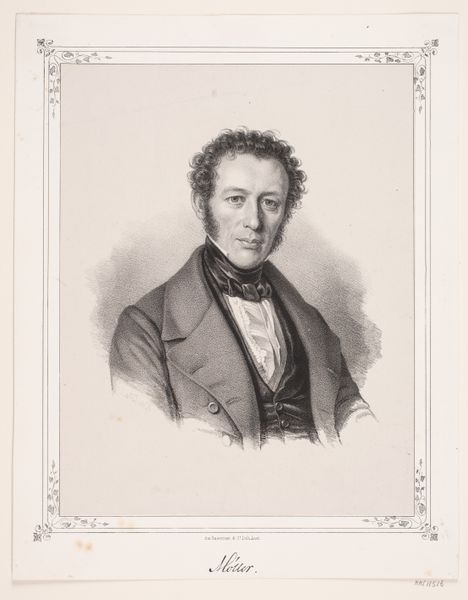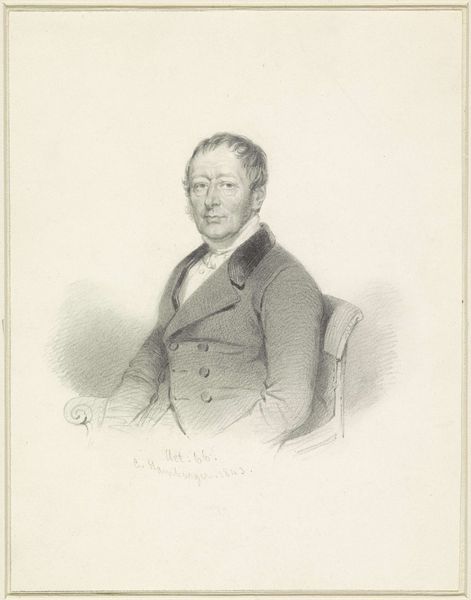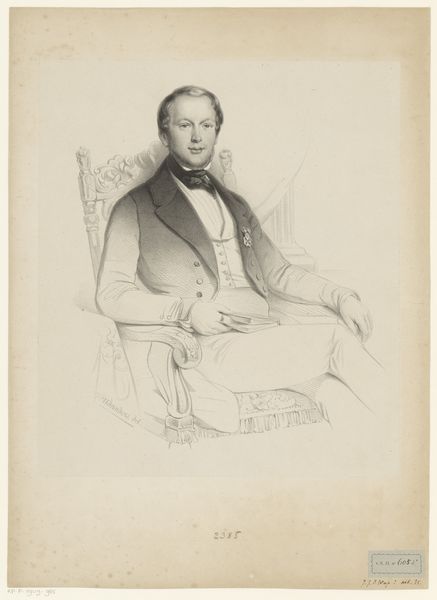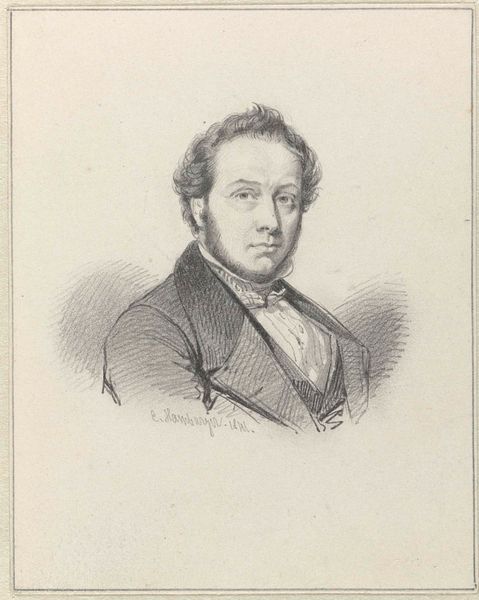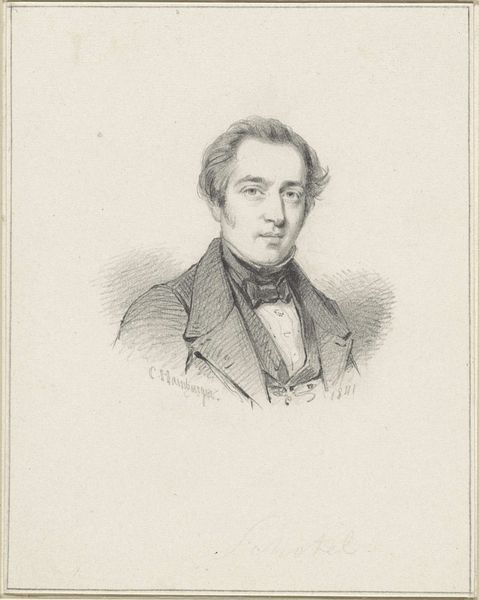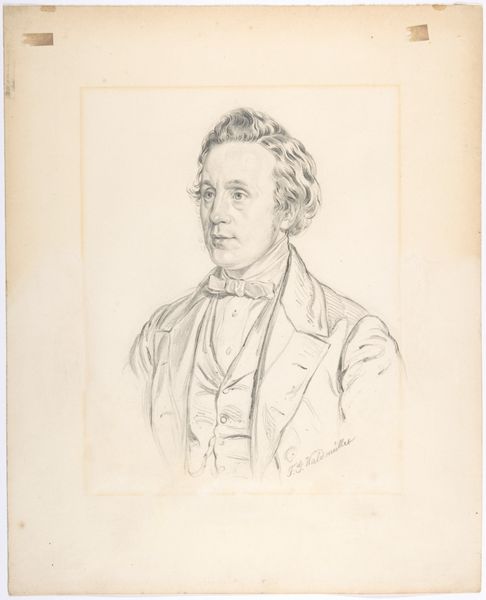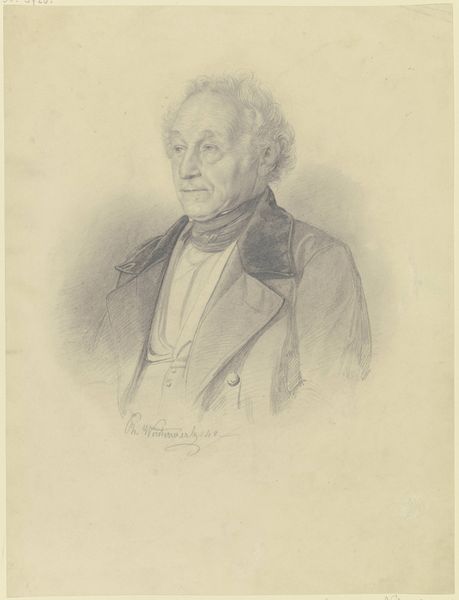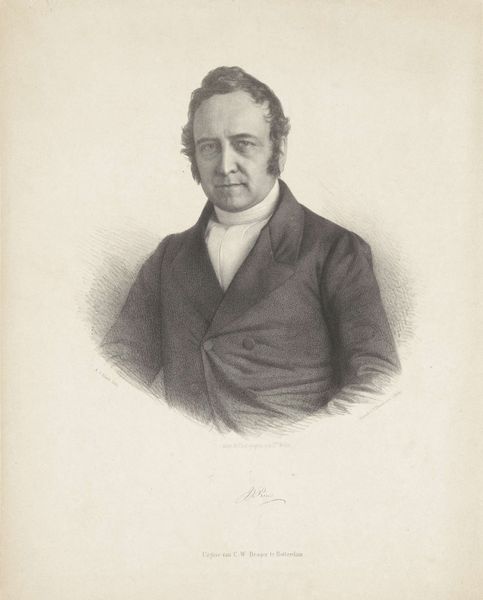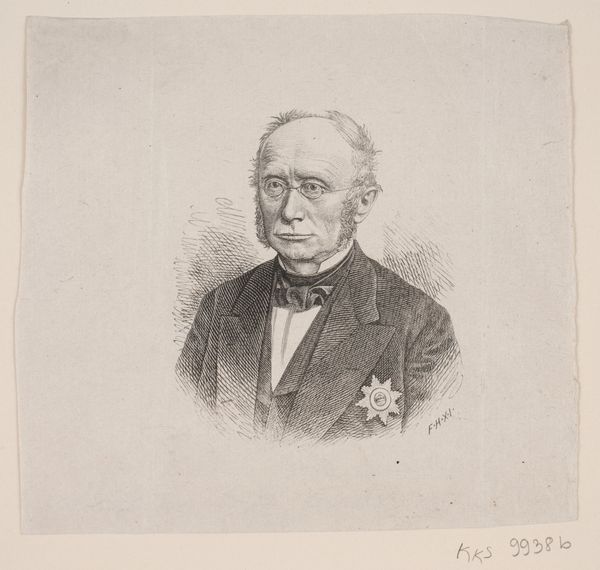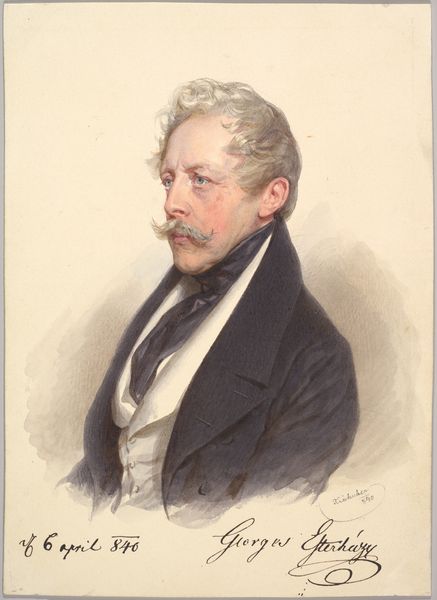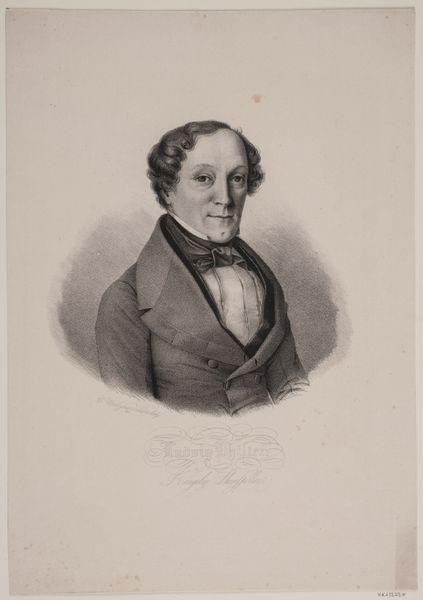
Dimensions: 15 x 19 cm
Copyright: Public domain
Editor: So, this is Josef Kriehuber's "Gentleman Portrait" from 1874, rendered in watercolor. It feels very formal, very…contained. What strikes you about it? Curator: I see the material constraints of 19th-century portraiture, specifically the implications of watercolor as a medium. While often relegated to amateur art or preparatory sketches, its use here suggests a democratizing force, making portraiture accessible beyond the elite who could afford oil paintings. Editor: So, the *choice* of watercolor itself is a statement? Curator: Precisely. Consider the labor involved – both the artist's skilled hand meticulously applying washes of color, and the often-anonymous paper makers and pigment grinders who supplied Kriehuber. The consumption of such portraits also needs to be considered. Who commissioned it? What social function did it serve in disseminating an image of respectable bourgeois identity? Editor: That makes me think about how watercolor lent itself to quicker reproduction compared to oils... potentially making this gentleman's image more widespread? Curator: Indeed. Watercolor enabled relatively faster production and circulation through reproductive prints. How does thinking about these aspects change your initial perception of it feeling "contained"? Editor: It pushes against it, actually. I see it less as stiff formality, and more as a moment in a much larger network of production, consumption, and, dare I say, early image distribution. Curator: Exactly! Analyzing materials and production processes helps us deconstruct the supposed aura of the artwork, locating it within the wider socio-economic fabric. I’m glad you were able to consider those broader perspectives.
Comments
No comments
Be the first to comment and join the conversation on the ultimate creative platform.
